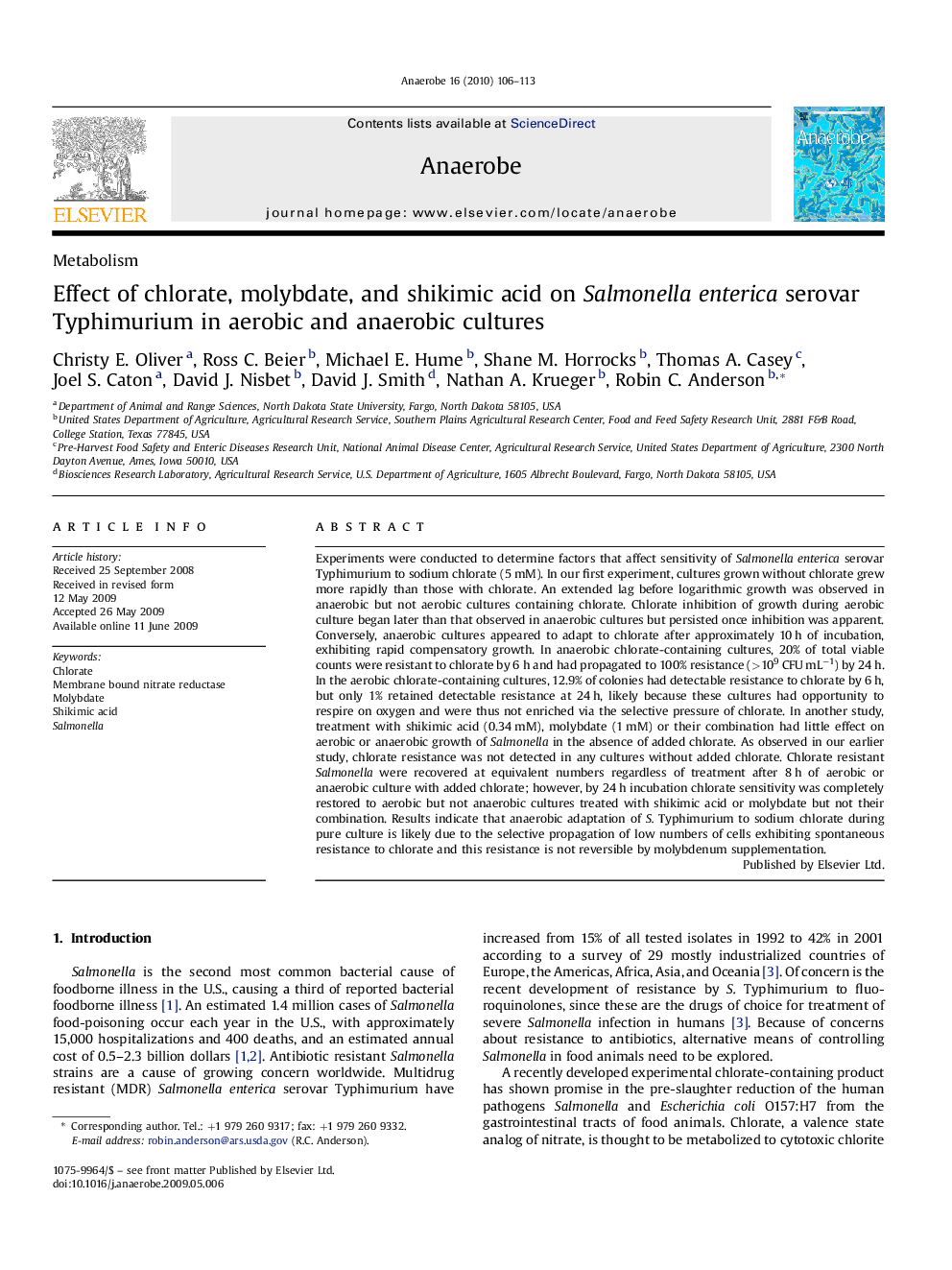| کد مقاله | کد نشریه | سال انتشار | مقاله انگلیسی | نسخه تمام متن |
|---|---|---|---|---|
| 3395693 | 1221700 | 2010 | 8 صفحه PDF | دانلود رایگان |

Experiments were conducted to determine factors that affect sensitivity of Salmonella enterica serovar Typhimurium to sodium chlorate (5 mM). In our first experiment, cultures grown without chlorate grew more rapidly than those with chlorate. An extended lag before logarithmic growth was observed in anaerobic but not aerobic cultures containing chlorate. Chlorate inhibition of growth during aerobic culture began later than that observed in anaerobic cultures but persisted once inhibition was apparent. Conversely, anaerobic cultures appeared to adapt to chlorate after approximately 10 h of incubation, exhibiting rapid compensatory growth. In anaerobic chlorate-containing cultures, 20% of total viable counts were resistant to chlorate by 6 h and had propagated to 100% resistance (>109 CFU mL−1) by 24 h. In the aerobic chlorate-containing cultures, 12.9% of colonies had detectable resistance to chlorate by 6 h, but only 1% retained detectable resistance at 24 h, likely because these cultures had opportunity to respire on oxygen and were thus not enriched via the selective pressure of chlorate. In another study, treatment with shikimic acid (0.34 mM), molybdate (1 mM) or their combination had little effect on aerobic or anaerobic growth of Salmonella in the absence of added chlorate. As observed in our earlier study, chlorate resistance was not detected in any cultures without added chlorate. Chlorate resistant Salmonella were recovered at equivalent numbers regardless of treatment after 8 h of aerobic or anaerobic culture with added chlorate; however, by 24 h incubation chlorate sensitivity was completely restored to aerobic but not anaerobic cultures treated with shikimic acid or molybdate but not their combination. Results indicate that anaerobic adaptation of S. Typhimurium to sodium chlorate during pure culture is likely due to the selective propagation of low numbers of cells exhibiting spontaneous resistance to chlorate and this resistance is not reversible by molybdenum supplementation.
Journal: Anaerobe - Volume 16, Issue 2, April 2010, Pages 106–113